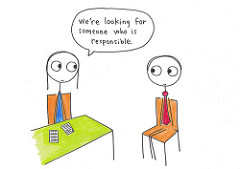Why Your Operators Need To Be Part Of Your Reliability Program
 You drive your car (almost) every day, you will immediately notice a new noise, vibration, or feel to the car. Once you detect this you would report the issue to your mechanic (or if yourself and do the repair), and he would investigate the issue. The repair would be made and the car returned to you.
You drive your car (almost) every day, you will immediately notice a new noise, vibration, or feel to the car. Once you detect this you would report the issue to your mechanic (or if yourself and do the repair), and he would investigate the issue. The repair would be made and the car returned to you.
This same approach is what should be happening in your plant. The operators of the plant equipment, operate the equipment every day and know the equipment. Any changes or variation in the equipment or process would be noticed by them and should be reported to the maintenance department.
Based on this approach that we use every day with our cars, why is it that in many plants the operators do not notify maintenance of changes? Or the notifications go unused or not acted on?
Who Owns Reliability?
This lack of communication from operators, or the lack of acting on the communication by maintenance indicates that there is not a true understanding of who is responsible for the reliability of the equipment.
Going back to your car. The mechanic does not call your house and ask how things are going, it is a joint effort to keep your car reliable. The mechanic may remind you of routine maintenance, but ultimately it is up to you to give up your car for a period of time to perform the routine maintenance. During the routine maintenance, a mechanic may find an issue and request your approval to repair it. Reliability of the car is owned by you and the mechanic
The exact same thing should be occurring in your operation. It is a joint effort on part of the operations group and the engineering group. Depending on the maturity of the plant, procurement and engineering will also contribute to the reliability of the equipment. In the end, everyone is responsible for the reliability of the plant and equipment.
It’s Not Just Operations
During a recent visit to a plant, it was observed that the operators submitted a tremendous amount of notifications and they were acted on by maintenance. However upon a deeper dive into the operation of the plant, it was observed that the maintenance department never submitted a notification. The mechanics would walk by a pump that was rattling apart and do nothing.
When asked why they did this, the response was “Notifications are operation’s job.”. So while operations were involved and maintenance acting on their notifications, the reliability of the plant and equipment was not fully owned by everyone.
The same could go with procurement or engineering. A purchase of bearing or a new piece of equipment that is based solely on price represents reliability is not on everyone’s mind. If it was, Procurement would look at the specifications and aim to have the best quality bearing to reduce the total cost. Engineering would pay a little more upfront for standardized equipment, automated lubrication systems, etc.
Getting Everyone To Own Reliability
Getting everyone to own reliability is not a simple wave of the hand. It is extremely difficult to have everyone understand how they affect reliability. Let alone guide their actions to maintain or improve reliability. There are a few things that can be done to start the ownership of reliability.
- Top Down Leadership is required to make this shift. It will not be grown from the bottom up. Reliability needs to be made an organizational priority and goals aligned across functions.
- Education is required to ensure everyone understands the impact of unreliability on an organization. Education is also required so that everyone understands how they can impact reliability. The impact of procurement will be different than engineering, but there is an impact regardless and not is more or less than another.
- Performance Management is utilized through aligned cross-functional If these goals are not measured, part of someone’s performance bonus, or acted upon than reliability will not be top of mind for most people.
Introducing Asset Management
The goal of reliability is to reduce the total cost to the business, whether through lost production, labour costs, warranty costs, or material costs. This is about getting the most value from the plant. That is the same goal of Asset Management. The Asset Management (ISO55001) standard is designed to provide guidance to organizations which want to realize maximum value from their plant (or other assets).
If a plant or organization is seeking to realize maximum value from their assets, improve reliability and get everyone on the same page, the Asset Management standard is a great place to start. It does not mean your organization needs to be certified against the standard but use the principles within.
It is only when everyone takes responsibility for the performance of the plant and equipment that an organization will truly grow and reduce excess costs.
Is everyone in your plant responsible for Reliability? How did you get everyone to own reliability? Did you use education, or performance management, or something else?
Remember, to find success, you must first solve the problem, then achieve the implementation of the solution, and finally sustain winning results.
I’m James Kovacevic
Eruditio, LLC
Where Education Meets Application
Follow @EruditioLLC
References:
ISO 55000 – Asset Management Series[/fusion_builder_column][/fusion_builder_row][/fusion_builder_container]



